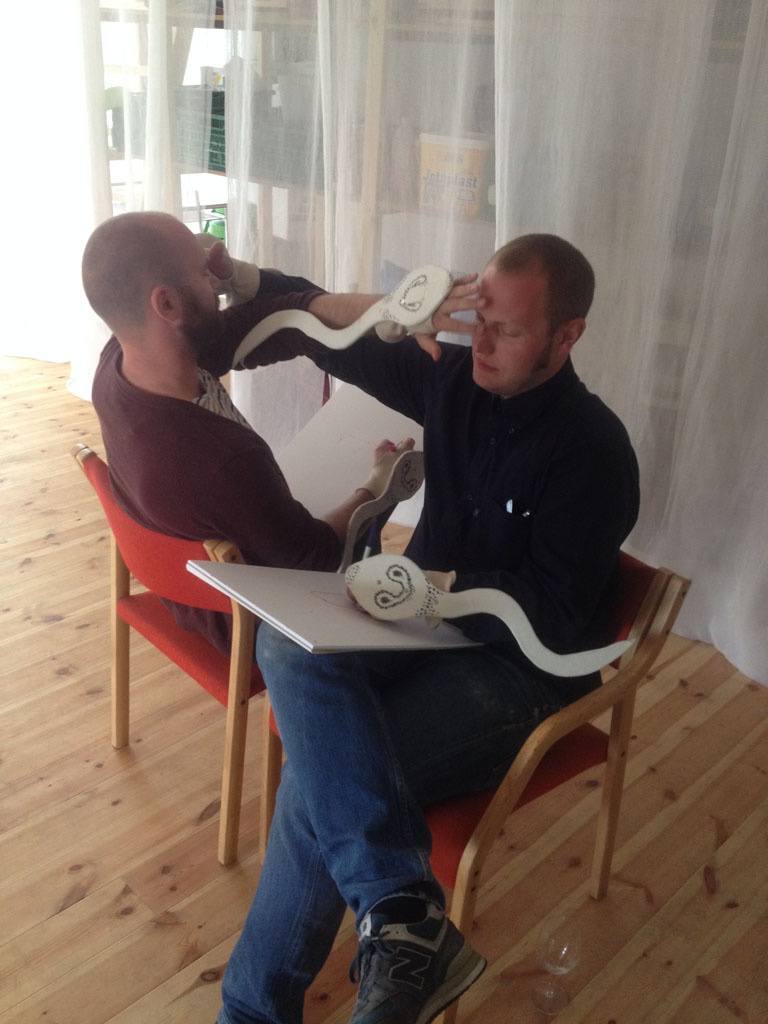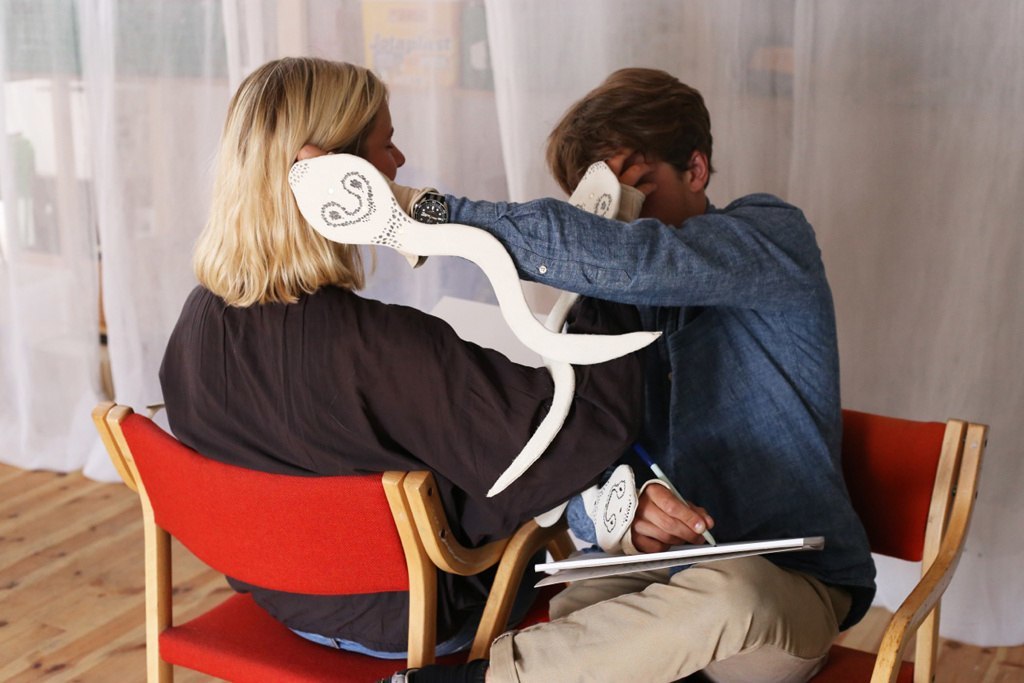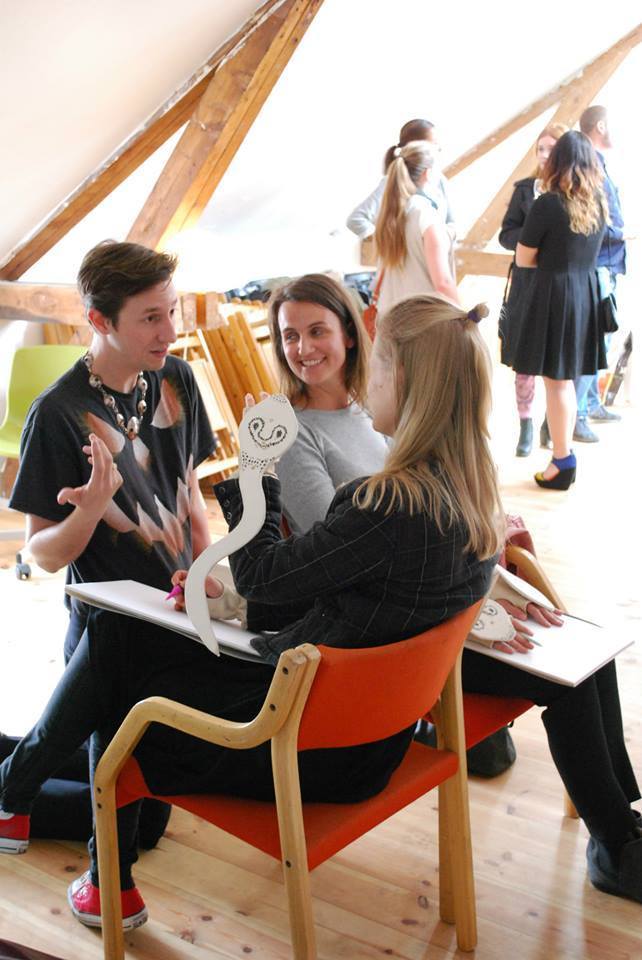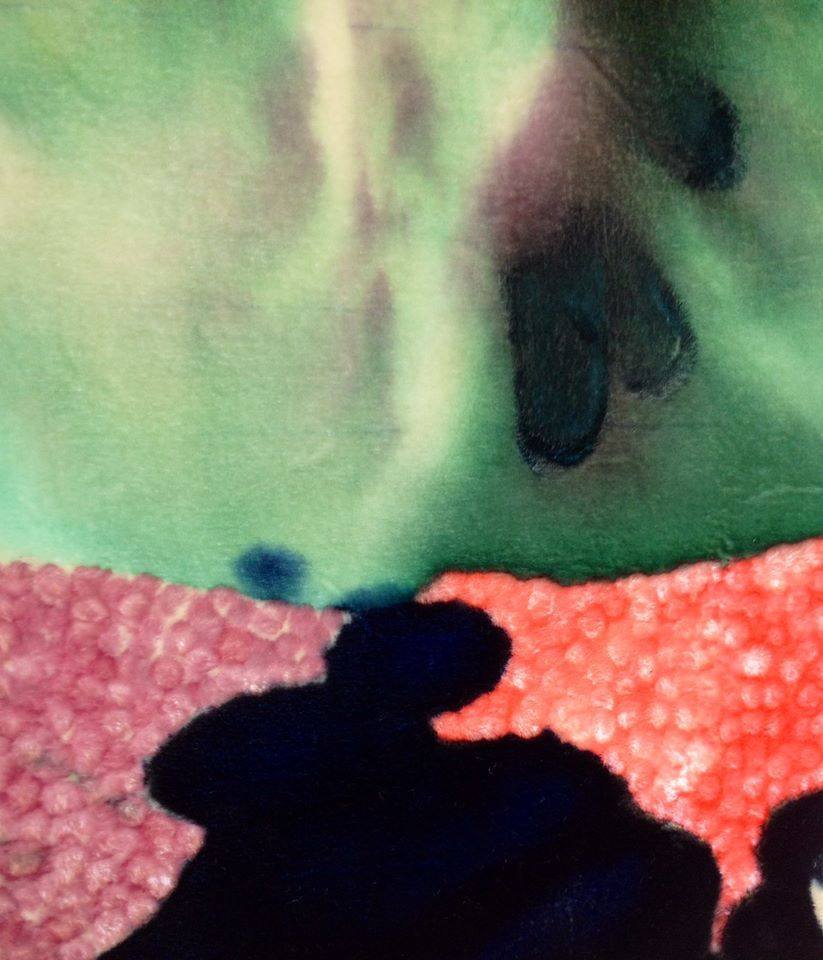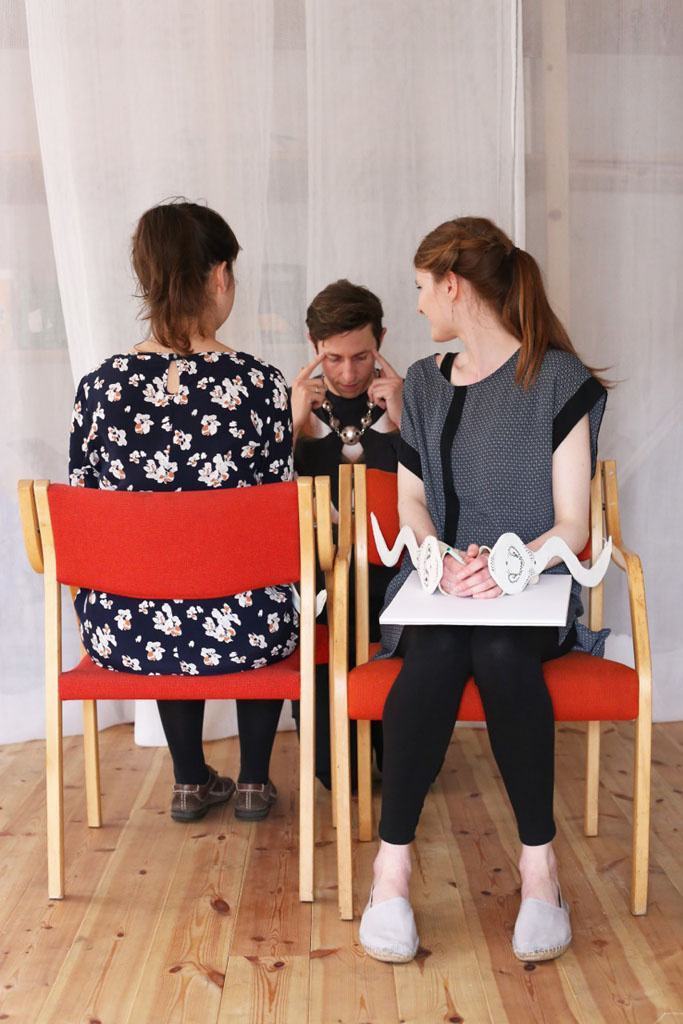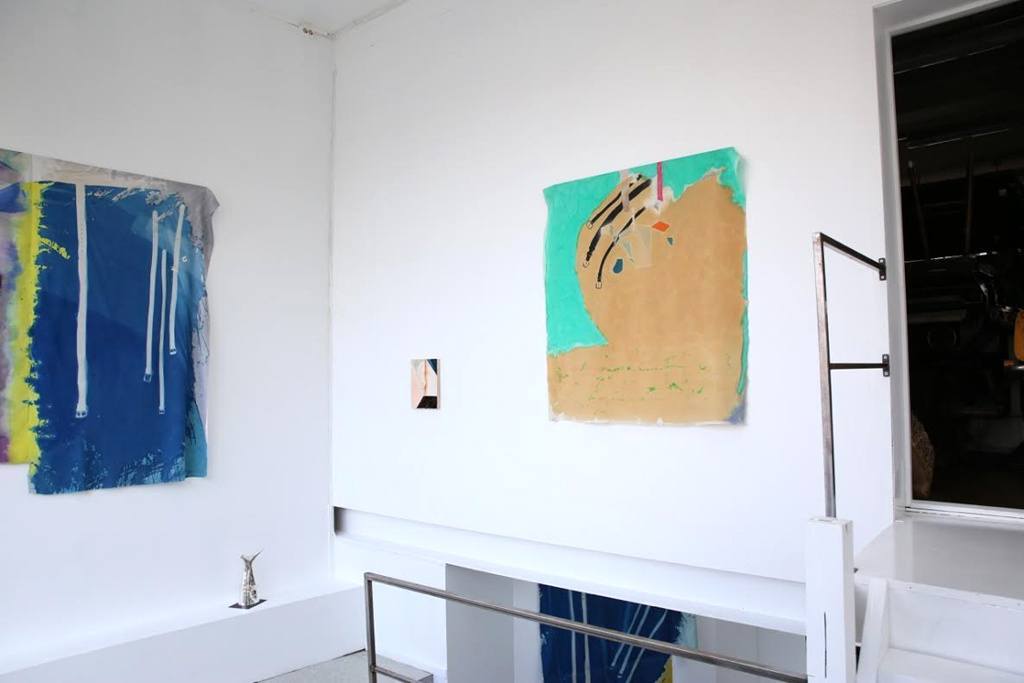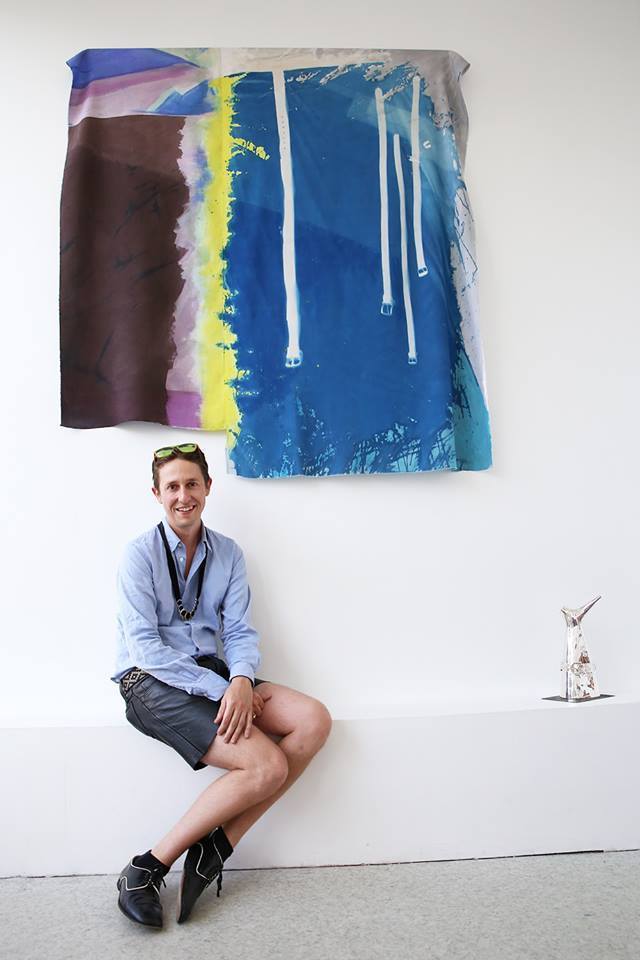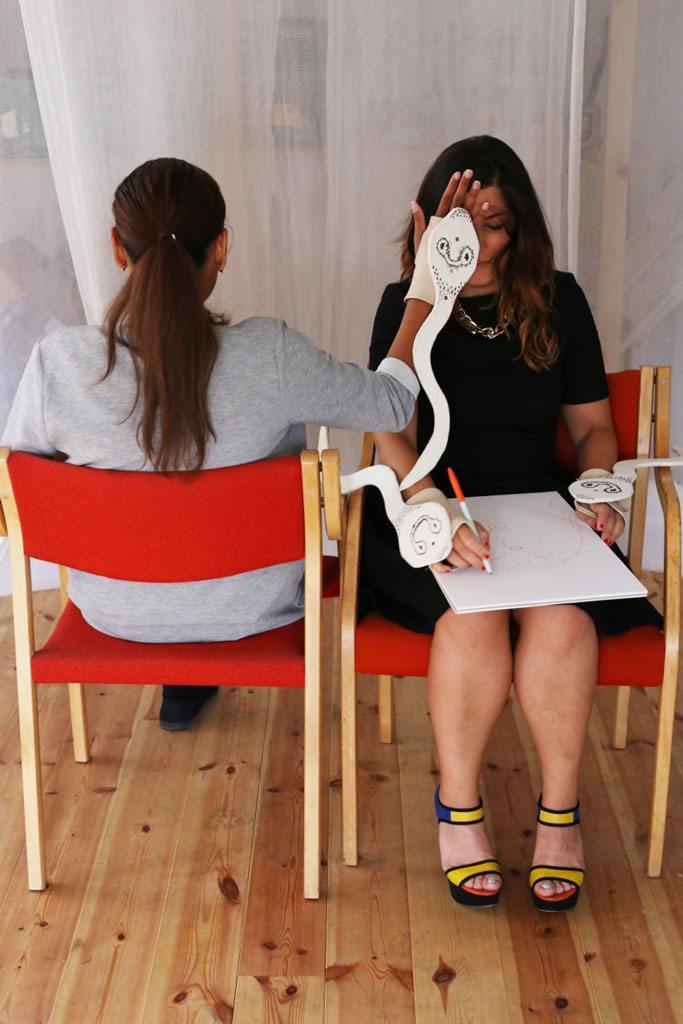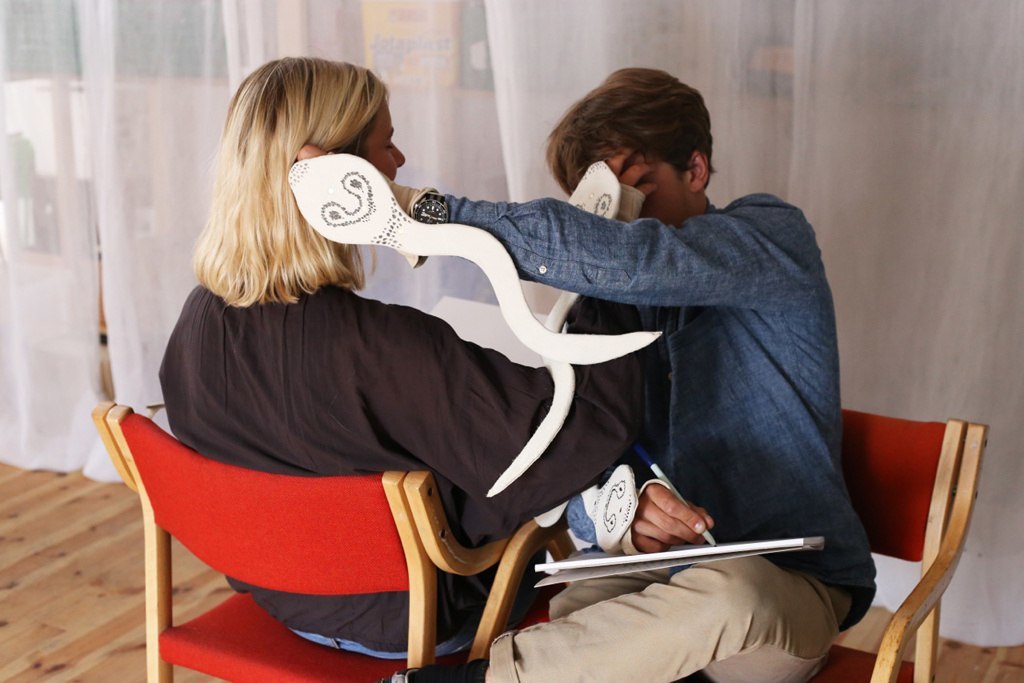Heather Jones: I understand that you grew up in Ft. Worth, Texas and received a BFA from the University of North Texas before going on to earn an MFA from Bard College in New York. Can you tell us a bit about your background and how you first came to be involved in art?
Travis Boyer: It is a very broad question so I will offer an anecdotal story. When I was a teenager, a big art foundation called the Barnes Collection came to the Kimbell Art Museum in Fort Worth. It was a big deal that temporarily bolstered the local art scene. I ended up helping a textile artist paint silk scarves and woven things that were for sale; I learned a lot about textiles and art that summer and I suppose on some level, twenty years later, I’m still making scarves.
HJ: You’re currently participating in the residency program at Frida Hansens Hus and have a project, Sunshine on a Greased Pearl, on view right now at Studio 17 in Stavanger. Viewers can see paintings of abstracted forms, photo emulsion negatives of belts, and a sterling silver Tequila Netipot. What can you tell us about the works in this exhibition and how they relate to each other?
TB: For the most part these are themes I have been working with for the past two years. The velvet paintings in this show are the most experimental and a growing aspect of my practice.
HJ: You’ve participated in exhibitions from New York to Amsterdam, Mexico to Belgium, and now Norway. Looking through some of your past exhibitions, a lot of your artworks and installations are site-specific. Do you often work in response to your current place, and did the geography and culture of Stavanger in anyway influence this exhibition?
TB: Stavanger has become very near and dear to me at this point. I now have a lot of friends here and plenty of folks to say hi to on my walk from Frida Hansens Hus to the Kunstsenter but in terms of how Stavanger has inscribed itself onto my artwork – I spent two weeks in June very jetlagged and also having trouble adjusting to the sunny nights. I would sort of sleep walk around the town and especially down to the docks at Paradis in the very early hours of the morning. I would chat up road workers and learn my way around the city. The stillness of the water and strange luminosity on those nights was very surreal and the level of privacy you feel as a foreigner in an empty coastal town with pink sky and water is something quite special.
HJ: In general, your work seems to blend boundaries between abstract painting, figuration, textile work and performative events…including a recent performance Cobras Loving Cobras Loving Drawing at Rogaland Kunstsenter. Do you see these as separate approaches, or all part of the same artistic practice?
TB: My work is really inclusive – the paintings are gently participatory in the way that you are drawn to touch them, and how they relate to the body. The cobra drawings are the third variation I have performed based on a drawing exercise that Amy Sillman would do with me and the other Bard painters in grad school. I like generative group activities and think about them as being a socio-kinetic form of art. Sort of like relational aesthetics except socio-kintecis does not attempt to settle into some moralizing or utopian idea that comes from the artist; it is about the activity being really legible in such a way that you as a participant can take it or leave it, project onto it or ignore it. It takes on multiple interpretations without needing to anticipate what those might be. For example, here in the kunstsenter the cobra drawings seemed to be more about interrupting normal social barriers. I don’t think Norwegians are especially touchy-feely and so it was profound to touch and be touched in an art context. The drawings are great but I think the artistic byproduct here was goosebumps-But I could be wrong.
Travis Boyer has a forthcoming exhibition at Johannes Vogt Gallery this November. To learn more about the artist, visit the artist’s page, here.
